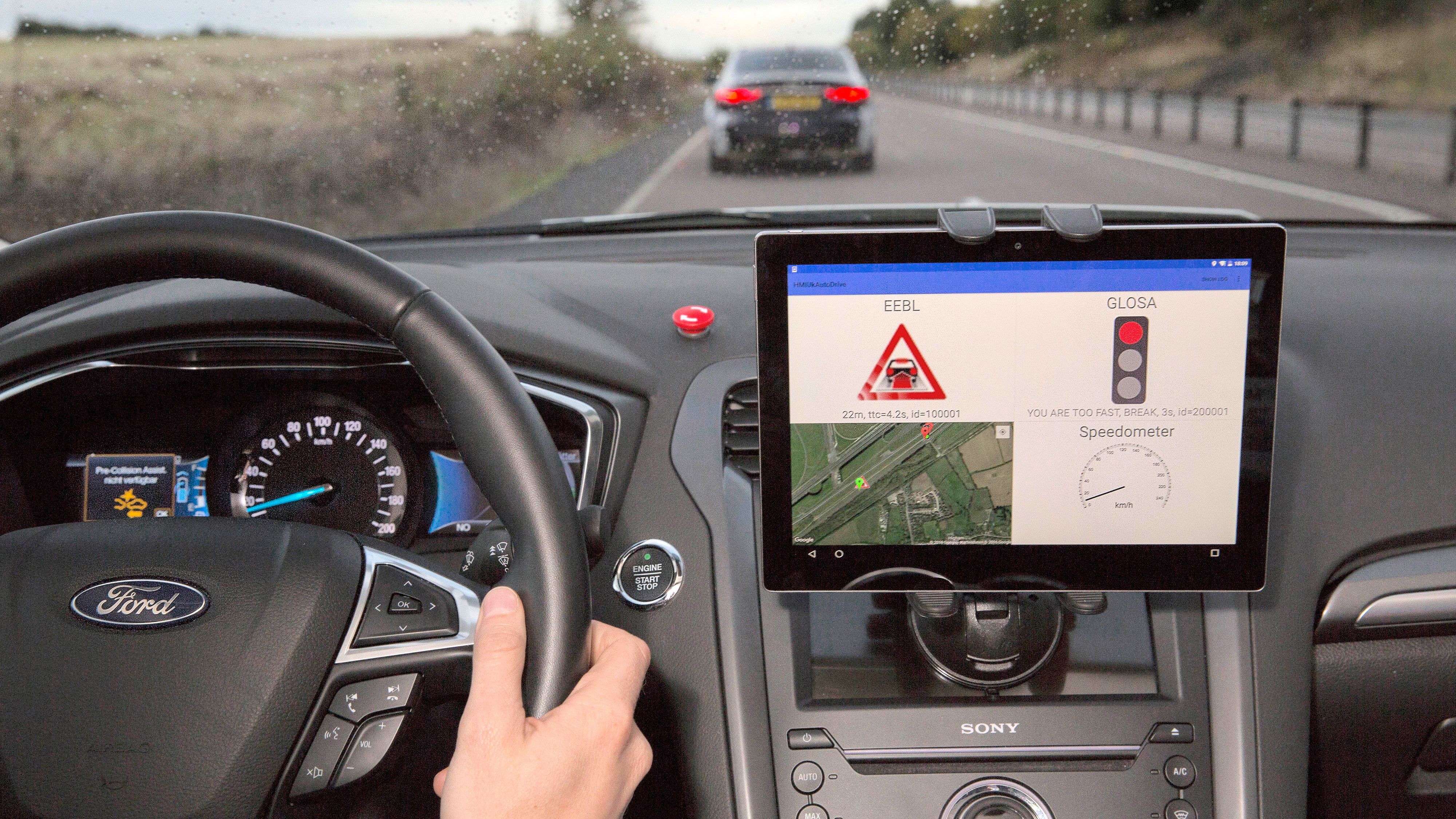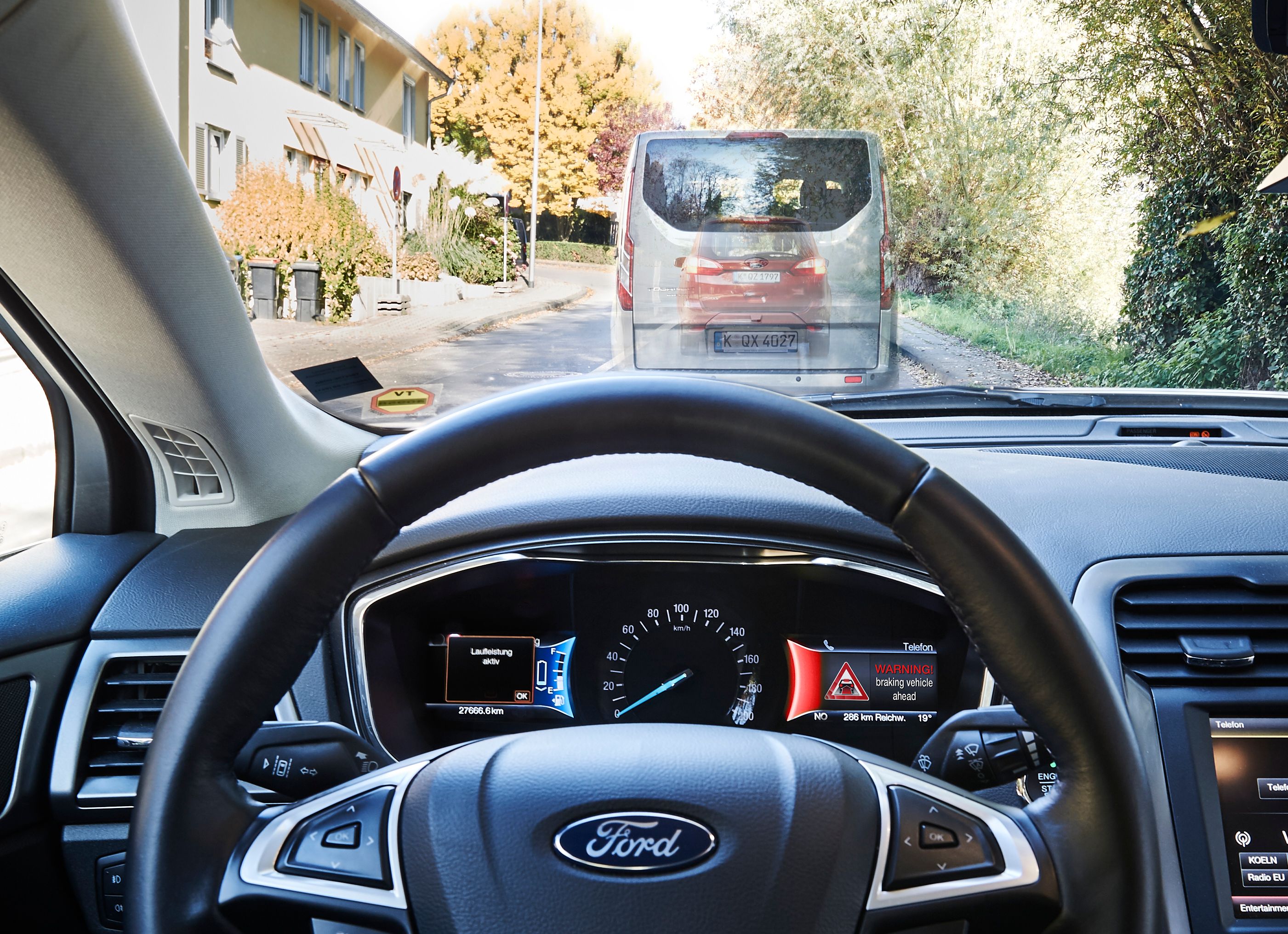Ford is working to develop and test a system that helps drivers maintain a proper speed through cities in order to avoid hitting red lights. It’s called the Green Light Optimal Speed Advisory and it uses information on traffic light timings on a roadside display to give drivers the optimal speed at which to travel.
“There’s not much worse after a long day than to hit one red light after another on the drive home, and be forced to stop and start again at every junction,” said Christian Ress, supervisor of Driver Assist Technologies at Ford Research and Advanced Engineering. “Enabling drivers to ‘ride the green wave’ also means a smoother, continuous journey that helps to improve the flow of traffic and provide significant reductions in carbon dioxide emissions and fuel consumption.”
Ford’s technology will be incorporated in to Europe’s largest self-driving and connected car trail. Called U.K. Autodrive, the publically funded project is designed to help advance vehicle-to-vehicle and vehicle-to-infrastructure communication. The two-year trail is being carried out on both public and private roads in Milton Keynes and Conventry.
As another part of Autodrive, specially equipped Ford Mondeo Hybrids are testing Emergency Electronic Brake Lights, which warns when a vehicle ahead suddenly brakes. The system also alerts the driver even if an incident ahead has occurred around a blind curve, up to 500 meters in advance.
Furthermore, the Autodrive is designed to ward of emergency vehicles. It also gives ambulance, police, and fire vehicles priority when approaching an intersection.
Once perfected, this type of technology could be spread, making its way across the pond to the U.S.
Continue reading for more information.
Why it Matters
The connected car and the Internet of Things is slowly becoming a reality. Pretty soon, vehicles will be communicating between themselves and autonomously driving as passengers relax and enjoy coffee why checking out social media on their smartphones. Automakers have already been working on connected car communications. Jaguar Land Rover, for example, has developed a system that allows cars to relay information about road conditions like potholes or road debris, allowing the following cars to automatically avoid the problem. Such an intertwined transportation system might seem far-fetched now, but it will likely become a reality in the next few decades.
Ford’s advancements in “riding the green wave” will undoubtedly save drivers time in congested city centers where red lights pose a serious delay. However, the system will only truly work with the help of civil engineers synchronizing the times of these stop lights. Nothing is more frustrating than hitting red lights block after block. By working to synchronize traffic lights, city centers will automatically become less jammed and congested. If nothing else, Ford’s advancements in this area will bring attention to miss-timed traffic lights.


